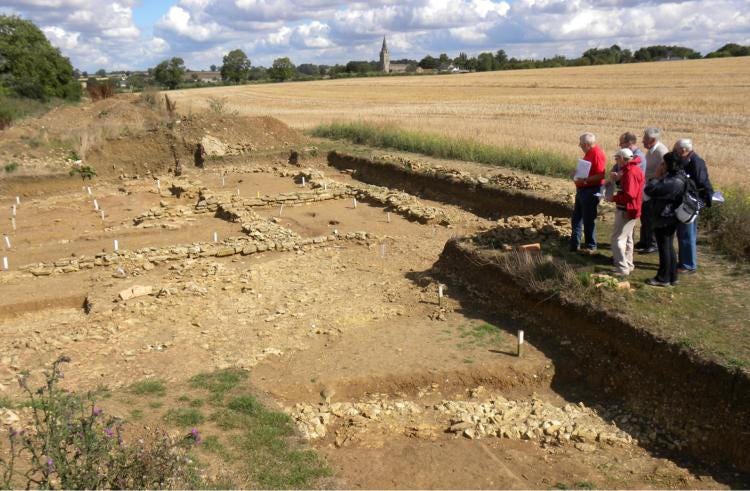Where Did Everyone Go? Tracking Down the Lost Settlements of Post-Roman Britain
What Archaeology Can Tell Us
Hello there! I’m currently studying for a PhD in Archaeology at Oxford, researching the role of women in the social and political developments of 6th- and 7th-century England and France. With a worldwide readership of over 5,100 PLUS featuring regularly in Substack’s top 100 fastest-growing history publications, I help curious minds go from “I’ve heard of the Saxons” to “Now I get how it all fits together”, one relatable, richly-narrated story at a time. My top 3 posts of all time have been a review of Rebecca Stott’s Dark Earth, biography of Æthelthryth of the Northumbrians (the queen who wouldn’t sleep with her husband), and my guide to what Dark Age queens really looked like.
Where Did Everyone Go? Tracking Down the Lost Settlements of Post-Roman Britain
What Archaeology Can Tell Us
One of the enduring mysteries of ‘Dark Age’ history - particularly for those of us historians trying to dispel the ‘dark’ myth - is where they all lived.
After the iconic stone-built villas and cities of the first to fourth centuries we have … well … nothing.
Or nothing much, at least.
Roman archaeological sites are famously full of finds. Over a decade ago, just before starting at university, I was fortunate enough to dig at Piddington Roman villa, a huge and important estate in Northamptonshire, just north of London. Though we didn’t find much that was glam (no coins, mosaics, or glass vessels where I was digging), the trenches were bursting with finds: tiles, stone walls, even a prehistoric quern stone that had been reused as building material. In fact, we had so many finds that the site director ended up using some of the building rubble to provide a less slippery surface for the site’s access road when it flooded! There was simply too much to send it all to the local museum.

Once we step into the first few decades after the Roman withdrawal in c.410AD, however, all this settlement evidence disappears from the regions of lowland Britain that we’d now call England.1
So where did the people go? Where did they live?
And, crucially, how true a break was this with the settlement patterns of their ‘Roman’ ancestors?2
In this essay, we’ll be looking at the literary and archaeological evidence for the collapse of Roman settlement patterns, building on a previous essay that highlighted the rapid decline of Roman building techniques during the fifth century. We’ll then discuss the steadily growing archaeological evidence for fifth- and sixth-century settlements, with all the difficulties associated with uncovering them owing to changing building materials. We’ll close with a brief discussion of what came next, in the seventh century, when more familiar settlement forms - elite sites, trading hubs, and so on - begin to re-emerge from the mists of the Dark Ages.
And it won’t surprise long-time readers to learn that this centuries-long story is yet another one of adaptation and survival in a time marked by uncertainty and change…


